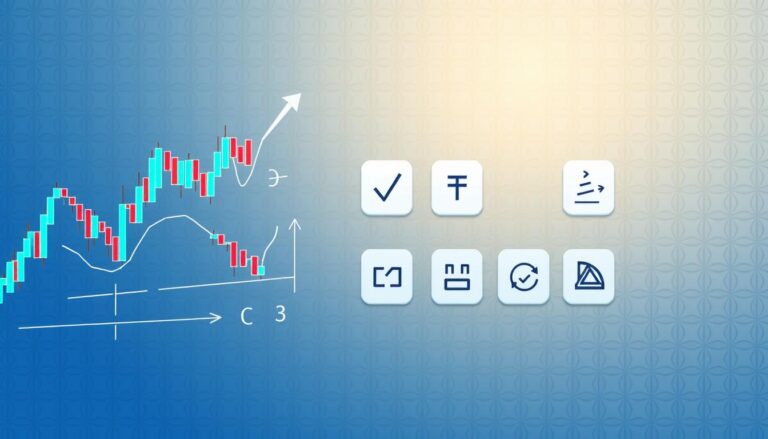FX Options vs Spot Forex: What’s the Difference?
Understanding how currencies are traded can shape a trader’s strategy. Two popular methods dominate the market: one involves contracts for future exchanges, while the other focuses on immediate transactions. The key distinction lies in when prices are set and when currencies physically change hands.
Contracts for future currency exchanges allow traders to lock in rates today for deals that settle later. This approach offers flexibility, letting participants hedge risks or speculate on price movements. Immediate transactions, however, require buying or selling currencies at current market rates. These trades settle within days, making them ideal for short-term opportunities.
Both methods cater to different goals. Some traders prioritize managing volatility, while others seek quick execution. Platforms like Investopedia and Yahoo Finance emphasize how these strategies align with varying risk appetites. For instance, contracts might suit those planning for economic events, whereas immediate trades respond to real-time news.
This article breaks down the mechanics, advantages, and use cases for each method. It clarifies terminology, references industry standards, and highlights practical examples. By the end, readers will grasp which approach aligns with their financial objectives.
Introduction to FX Options vs Spot Forex
Advancements in financial technology now provide traders with multiple avenues to execute deals. Over decades, currency markets have evolved from simple cash exchanges to sophisticated platforms offering tools like contract-based agreements and real-time transactions. This shift has made strategies like spot trading and options contracts essential for navigating global exchange rate fluctuations.
For UK-based participants, understanding these methods is critical. Spot transactions focus on immediate trades at current prices, ideal for reacting to market news. In contrast, options grant the right—but not the obligation—to buy or sell currencies at predetermined rates later. Each approach serves distinct goals, from quick profit-taking to long-term risk management.
The article targets traders seeking clarity on terminology and mechanics. It breaks down how these strategies handle volatility, costs, and regulatory factors. By comparing their structures, readers can identify which aligns with their risk tolerance and financial objectives.
Practical examples and industry standards will illustrate key differences. Whether hedging against economic uncertainty or capitalizing on short-term trends, the right choice depends on a trader’s timeline and expertise. This guide simplifies those decisions, offering actionable insights for refining individual approaches.
Defining the Spot Forex Market
What makes the global currency market so fast-paced? At its core lies the spot market, where trillions change hands daily. This arena focuses on real-time transactions, allowing traders to act on current economic shifts without delays.
Understanding Spot Trading Mechanics
Spot trading involves buying or selling currency pairs instantly at prevailing prices. Orders execute within seconds, with settlement typically occurring within two business days. For example, purchasing euros with dollars (EUR/USD) locks in today’s rate for immediate exchange.
Liquidity plays a vital role here. Major pairs like GBP/USD or USD/JPY see high trading volumes, ensuring tight spreads. This makes entering or exiting positions easier compared to less active markets.
Key Terms: Currency Pair and Exchange Rate
A currency pair represents two currencies being traded, such as EUR/GBP. The first is the base currency, while the second is the quote. Exchange rates show how much quote currency is needed to buy one unit of the base.
Market volatility drives opportunities. Sudden news—like interest rate changes—can shift rates rapidly. Traders monitor these movements to capitalize on short-term trends or hedge existing positions.
Mastering these fundamentals helps traders navigate price swings and leverage real-time data effectively. Whether aiming for quick gains or strategic entries, clarity on mechanics builds confidence in decision-making.
Exploring FX Options Trading

Currency markets offer more than just immediate trades. One method allows participants to secure future opportunities without mandatory commitments. This approach centers on agreements that provide flexibility, letting traders adapt to market shifts over time.
Essential Components and Terminology
Options contracts grant the right—not obligation—to exchange currencies at preset rates before expiration. Three elements define these agreements:
- Strike price: The predetermined rate for buying or selling.
- Expiration date: The deadline for exercising the contract.
- Premium: The upfront cost paid by the buyer, as noted by Alexander Shishkanov.
For example, a trader might pay £500 for the right to purchase euros at 0.85 GBP/EUR within three months. If rates rise above this level, they profit. If not, they let the contract expire.
Benefits and Risks of Options Contracts
These tools help manage uncertainty. Companies hedge against unfavorable rate swings, while speculators bet on volatility without large upfront investments. However, time works against buyers. Premiums erode as expiration nears, and sudden market reversals can nullify strategies.
Understanding these dynamics is critical. Misjudging timing or price targets often leads to losses. Yet, when used strategically, contracts provide a safety net in unpredictable markets.
FX Options vs Spot Forex: A Direct Comparison
Currency markets present traders with distinct approaches to managing risk and capitalizing on opportunities. The core distinctions between these strategies lie in when prices are locked in and how transactions conclude. Understanding these mechanics helps traders align choices with their goals.
Timing and Price Determination
Spot trading executes at current exchange rates. For example, buying euros with pounds today locks in the rate visible on trading platforms. Prices fluctuate instantly with market news, creating opportunities—or risks—within seconds.
Options contracts fix rates upfront. A trader might secure a GBP/USD rate of 1.25 for settlement in three months. This shields against unfavorable shifts but requires paying a premium. Time becomes a critical factor, as contracts lose value if markets don’t move as anticipated.
Settlement and Physical Delivery Differences
Spot transactions typically settle within two business days. Physical currency exchanges occur unless positions are rolled over. This suits short-term strategies needing quick access to funds.
Options often settle in cash or through offsetting contracts. If the agreed rate becomes unfavorable, buyers let the contract expire, losing only the premium. This flexibility reduces capital commitment but demands precise timing.
For instance, a UK importer might use options to hedge against pound depreciation before a payment deadline. Meanwhile, a day trader prefers spot markets to exploit hourly rate swings. Each method addresses unique risks, making context essential for decision-making.
Advantages of Spot Trading in the Forex Market

Why do traders gravitate toward immediate transactions in currency markets? The answer lies in three pillars: speed, accessibility, and reliability. With over $6.6 trillion traded daily, this arena dominates global financial markets. Settlements typically finalize within 48 hours, creating unmatched opportunities for agile participants.
Instant Execution and Market Liquidity
Real-time order fulfillment lets traders capitalize on price swings as they happen. Unlike delayed settlements, spot transactions lock in rates the moment deals are confirmed. This immediacy proves vital during economic announcements or geopolitical shifts.
High liquidity ensures even large orders execute smoothly. Major pairs like EUR/USD or GBP/USD see constant demand, minimizing slippage risks. A trader exchanging 500,000 dollars for euros won’t struggle to find counterparties, thanks to round-the-clock activity.
- Transparent pricing: Live exchange rates reduce ambiguity, letting traders make decisions based on current data.
- Physical settlement: Actual currency exchanges occur within days, reinforcing trust in the process.
- Simplified strategies: No complex contracts or expiration dates—just straightforward buying and selling.
For example, a UK-based investor might exploit sudden pound volatility after a Bank of England rate decision. Spot trading’s structure allows them to enter and exit positions within minutes, turning rapid market movements into profitable opportunities.
Pros and Cons of FX Options Trading

Balancing risk and reward requires tools that adapt to market unpredictability. Contracts tied to future currency prices offer unique advantages but demand careful navigation of their limitations. Let’s explore how these agreements empower traders while testing their strategic discipline.
Flexibility and Hedging Opportunities
Options grant control without commitment. Traders can hedge positions or speculate on price swings without owning the underlying asset. For instance, a UK exporter might buy a contract to sell dollars at a fixed GBP rate, protecting profits if the pound strengthens.
Losses here are capped at the premium paid. If markets move against the trader, they simply let the contract expire. This safety net appeals to those managing portfolios amid economic uncertainty.
However, complexity lurks beneath the surface. Understanding terms like implied volatility and time decay is essential. Contracts lose value rapidly if price targets aren’t met before expiration. A poorly timed bet could render the agreement worthless, eroding the initial investment.
- Strategic upside: Unlimited profit potential if markets trend favorably.
- Cost considerations: Premiums add up, especially for frequent traders.
- Skill dependency: Success hinges on accurately predicting timing and magnitude of rate shifts.
While these tools provide powerful risk management, they’re not shortcuts. Mastery demands patience, education, and disciplined execution to avoid costly missteps.
Trading Strategies for FX Options vs Spot Forex

How do traders balance protection and profit in volatile markets? Effective approaches combine defensive measures with calculated bets on price shifts. Both hedging and speculation play vital roles, but their execution varies between contract-based agreements and real-time transactions.
Hedging Techniques and Protective Measures
Protective puts shield against downside risks in currency options. Traders pay a premium for the right to sell at a preset rate, limiting losses if markets plunge. For example, a UK exporter holding dollars might buy puts to lock in GBP conversion rates before Brexit-related announcements.
In spot markets, stop-loss orders automatically close positions if rates hit unfavorable levels. This prevents emotional decision-making during sudden swings. Combining these with limit orders allows traders to define risk parameters upfront.
Speculative Strategies for Market Movements
Long straddles profit from volatility spikes. Traders simultaneously buy call and put options with identical strike prices, banking on sharp rate movements in either direction. This works well before major events like central bank meetings.
Spot traders often use breakout strategies, entering positions when prices surpass key resistance levels. Unlike options, these require precise timing but avoid premium costs. Scalping small gains from frequent trades capitalizes on intraday liquidity without overnight exposure.
Contract-based strategies offer predefined risk through premiums, while spot methods demand active monitoring. Aligning choices with risk tolerance is crucial: conservative traders favor hedging, while aggressive participants chase speculative gains. Tools like trailing stops or rolling contracts help adapt as market conditions evolve.
Risk Management and Trading Considerations

Navigating unpredictable markets demands more than intuition—it requires structured safeguards. Traders must balance opportunity with protection, tailoring strategies to their chosen method’s unique risks. Discipline and precision separate long-term success from costly missteps.
Utilizing Stop Losses and Position Sizing
Stop-loss orders act as emergency brakes during adverse movements. In real-time transactions, these automatically close positions if rates breach preset levels. For example, setting a 1% loss limit on a £10,000 trade caps potential damage at £100.
Position sizing prevents overexposure. Experts like Alexander Shishkanov recommend risking no more than 2% of capital per trade. This shields portfolios from single-event collapses while allowing room for recovery.
Understanding Premium Costs and Volatility
Contracts tied to future prices involve upfront premiums that erode over time. These costs depend on market volatility and expiration dates—higher uncertainty often means pricier agreements. A three-month GBP/USD contract might cost £300 today but lose value if rates stagnate.
Volatility impacts profitability in two ways. Sharp swings boost opportunities for gains but amplify risks. Traders must assess whether potential rewards justify premiums or margin requirements.
- Adapt tools to goals: Use stop-losses for short-term trades and premium analysis for longer horizons.
- Monitor economic calendars: Central bank announcements often trigger rate fluctuations.
- Test strategies: Demo accounts help refine risk thresholds without financial exposure.
Important Considerations for UK Forex Traders
Navigating the foreign exchange market requires more than market knowledge—it demands awareness of local regulations. UK-based participants must prioritize compliance and security to safeguard their activities. The Financial Conduct Authority (FCA) sets strict standards for brokers, ensuring transparency and fair practices.
Regulatory Environment and Broker Selection
The FCA mandates that brokers segregate client funds from operational accounts. This protects traders’ capital if a firm faces financial difficulties. Reputable platforms also provide negative balance protection, preventing losses from exceeding deposited amounts.
Choosing the right broker involves evaluating three key factors:
- Regulatory compliance: Verify FCA registration through the official Financial Services Register.
- Fee structures: Compare spreads, commissions, and overnight financing costs across platforms.
- Educational resources: Look for webinars, demo accounts, and real-time analysis tools to sharpen strategies.
Established brokers like IG and CMC Markets exemplify these traits. They offer encrypted trading environments and detailed risk disclosures, aligning with FCA guidelines. Such features reduce exposure to fraud while fostering informed decision-making.
Understanding these elements helps traders mitigate risks inherent in currency markets. A well-chosen broker acts as a partner, providing tools to navigate exchange rate volatility confidently.
Final Thoughts and Next Steps for Traders
Success in currency markets hinges on aligning strategies with the right tools. Traders must weigh flexibility against immediacy, balancing potential gains against risks. Contracts lock rates for future dates, ideal for managing uncertainty. Immediate transactions capitalize on real-time prices, suited for short-term moves.
Strategic approaches differ based on goals. Hedging protects portfolios during volatility, while speculation targets quick profits. Risk management—like stop-loss orders or position sizing—remains vital in both methods. Understanding market mechanics builds confidence in navigating the foreign exchange market.
Next steps involve research and self-assessment. Traders should evaluate their risk tolerance and time horizons before choosing methods. Continuous learning refines trading skills, especially as economic conditions evolve. Following trusted financial news sources helps spot emerging trends.
Finally, practice sharpens decision-making. Start with small positions to test strategies in live markets. Keep refining techniques while staying adaptable to shifts in the foreign exchange market. Knowledge paired with discipline paves the way for long-term success.






